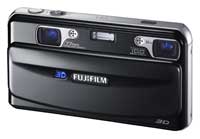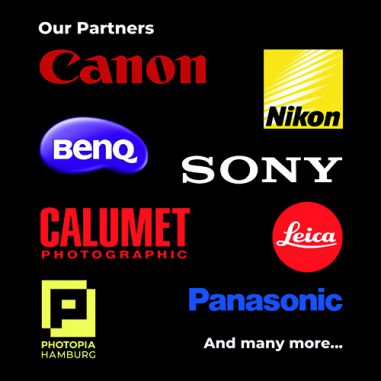The Real 3D W1 camera features the newly developed "Real 3D Lens System." To achieve a natural, 3D image, it was necessary to flawlessly layer together two images, so two Fujinon lenses, renowned for their high resolution and exquisite rendering, were installed. A robust aluminum die-cast frame has been used to protect the lenses from vibration and impact. A 3x optical zoom, deemed difficult to achieve in 3D photography because of the precision required to align two lenses, is also possible. Moreover, the "RP (Real Photo) Processor 3D" which is based on photo technology that Fujifilm has developed over the years, synchronizes data passed to it by the two lenses and two CCD sensors, to determine shooting conditions such as focus, brightness and tonality to instantaneously blend this information into a single symmetrical image, for both stills and movies. The 3D/2D LCD monitor features Fujifilm’s own LCD panel, exclusively for the display of 3D/2D images on digital cameras, allows to see beautiful, natural 3D images with the naked eye. As the camera performs a series of image processing steps automatically, anyone can take 3D stills and videos with superb picture quality by just pointing the camera and pressing the shutter button. The camera also will shoot 2D images and offers the same functions as conventional 2D digital cameras.
The Real 3D camera allows to adjust the settings to suit the scene being photographed. When using the 3D two-shot function, the camera shifts to take the second shot after taking the first shot, and saves a single 3D image in the camera manually. This allows you to edit the 3D images, particularly useful for long zoom telephoto shots where a 3D image is difficult to achieve, or conversely, macro shots, where the 3D effect can be too strong.
3D "Interval Shooting" allows further flexibility; it is possible to take two shots from different viewpoints continuously while the photographer is moving, for example by train, airplane, or car, etc., to achieve 3D images of long-distance views. Users can enjoy more dynamic 3D shots, whether they are capturing a sea of clouds from an airplane, or taking 3D shots of distant views from a car window. By using the "Parallax Control" function, the 3D images can be manually adjusted, either during filming or while viewing the images on the LCD monitor; this simplicity-of-use lets users really get creative when shooting in 3D.







